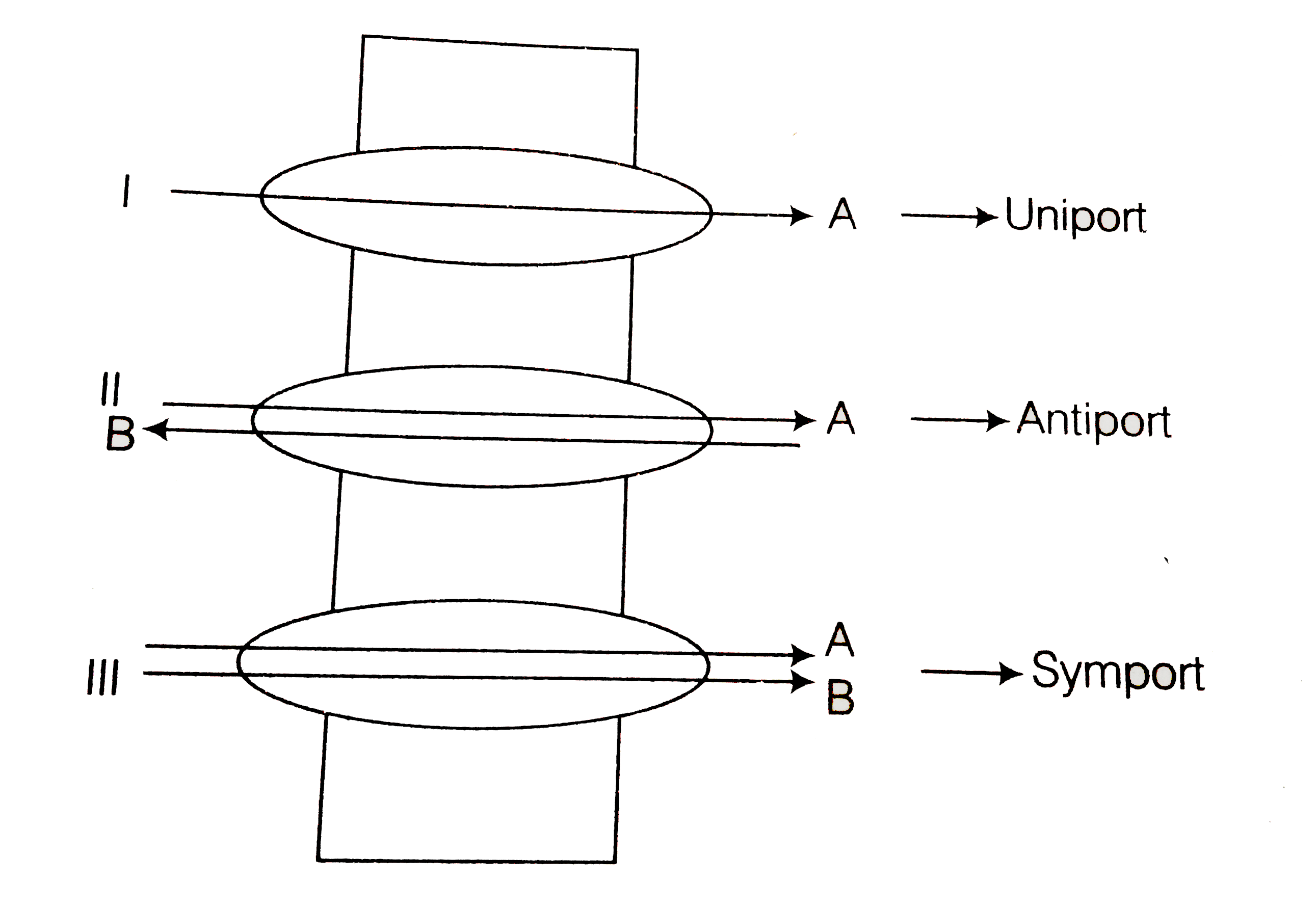Sodium ions cross a membrane through transport proteins that receive an energy boost. This is an example of :
passive transport
active transport
facilitated diffusion
both (a) and (c)
The correct Answer is:B
To solve the question regarding the transport of sodium ions across a membrane through transport proteins that require an energy boost, we can follow these steps:
1. Understanding the Process: The question states that sodium ions cross a membrane through transport proteins that receive an energy boost. This indicates that energy is involved in the transport process.
Hint: Look for keywords like "energy boost" or "requires ATP" to identify the type of transport.
2. Identifying Transport Types: There are different types of transport mechanisms in cells:
- Passive Transport: Does not require energy (e.g., diffusion, osmosis).
- Active Transport: Requires energy (usually in the form of ATP) to move substances against their concentration gradient.
- Facilitated Diffusion: A type of passive transport that uses transport proteins but does not require energy.
Hint: Recall the definitions of each transport mechanism to differentiate between them.
3. Analyzing the Given Information: Since the sodium ions are crossing the membrane with the help of transport proteins and require an energy boost, this suggests that they are moving against their concentration gradient, which is characteristic of active transport.
Hint: Consider whether the movement of sodium ions is against or along the concentration gradient.
4. Conclusion: Based on the analysis, the transport of sodium ions through proteins that require energy is an example of active transport.
Hint: Remember that active transport is specifically defined by the need for energy to move substances across a membrane.
Final Answer:
The correct answer is active transport.
- Passive Transport: Does not require energy (e.g., diffusion, osmosis).
- Active Transport: Requires energy (usually in the form of ATP) to move substances against their concentration gradient.
- Facilitated Diffusion: A type of passive transport that uses transport proteins but does not require energy.
The correct answer is active transport.
Topper's Solved these Questions
- CELL : THE UNIT OF LIFE BOOK - ICSECHAPTER - CELL : THE UNIT OF LIFE EXERCISE - Test Your Progress (Fill in the blanks with appropriate words)
29 Videos
- CELL : THE UNIT OF LIFE BOOK - ICSECHAPTER - CELL : THE UNIT OF LIFE EXERCISE - Test Your Progress (State whether the following statements are true or false )
45 Videos
- CELL - THE UNIT OF LIFEBOOK - ICSECHAPTER - CELL - THE UNIT OF LIFEEXERCISE - REVIEW QUESTIONS (LONG ANSWER TYPE QUESTIONS)
14 Videos
- CELL CYCLE AND CELL DIVISION BOOK - ICSECHAPTER - CELL CYCLE AND CELL DIVISION EXERCISE - REVIEW QUESTIONS ( LOOK AT THE FIGURE BELOW)
2 Videos
Similar Questions
Knowledge Check
Many molecules can move briefly across the membrane without any requirement of energy and special membrane proteins. This is called _______.
Aactive transportBpassive transportCfacilitated diffusionDAll of theseIn passive transport across a membrane, when two protein molecules move in opposite direction it is called as
AuniportBantiportCsymportDco-port.Energy released during movement of electrons through the photosystems in photosynthesis is used to drive protons across the membrane against concentration gradient. As a result the protons accumulate in
Athylakoid lumenBstoma of chloroplastCmatrix of mitochondrionDnone of these
In a passive transport across a membrane. When two protein molecules move in opposite direction and independent of each other, it is called as ...... .

View SolutionAir can oxidize sodium sulphite in eq. solution but cannot do so in the case of sodium arsenite. If however, air is passed through a solution containing both sodium sulphite & sodium arsenite then both are oxidized. This is an example of :-
View SolutionThe carrier - mediated cotransport in which a solute is actively transported across a membrane against the gradient of electrochemical potential by coupling the uphill transport of one solute to the downhill transport of another in an example of
View SolutionAssertion: The proton gradient is broken down due to the movement of protons across the membrane to stroma through the transmembrane channerl of the F0 of the ATPase.
Reason: The breakdonw of proton gradient leads to release of energy.
View SolutionThe endodermal cells have few transport proteins embedded in their plasma membrane .
View Solution
